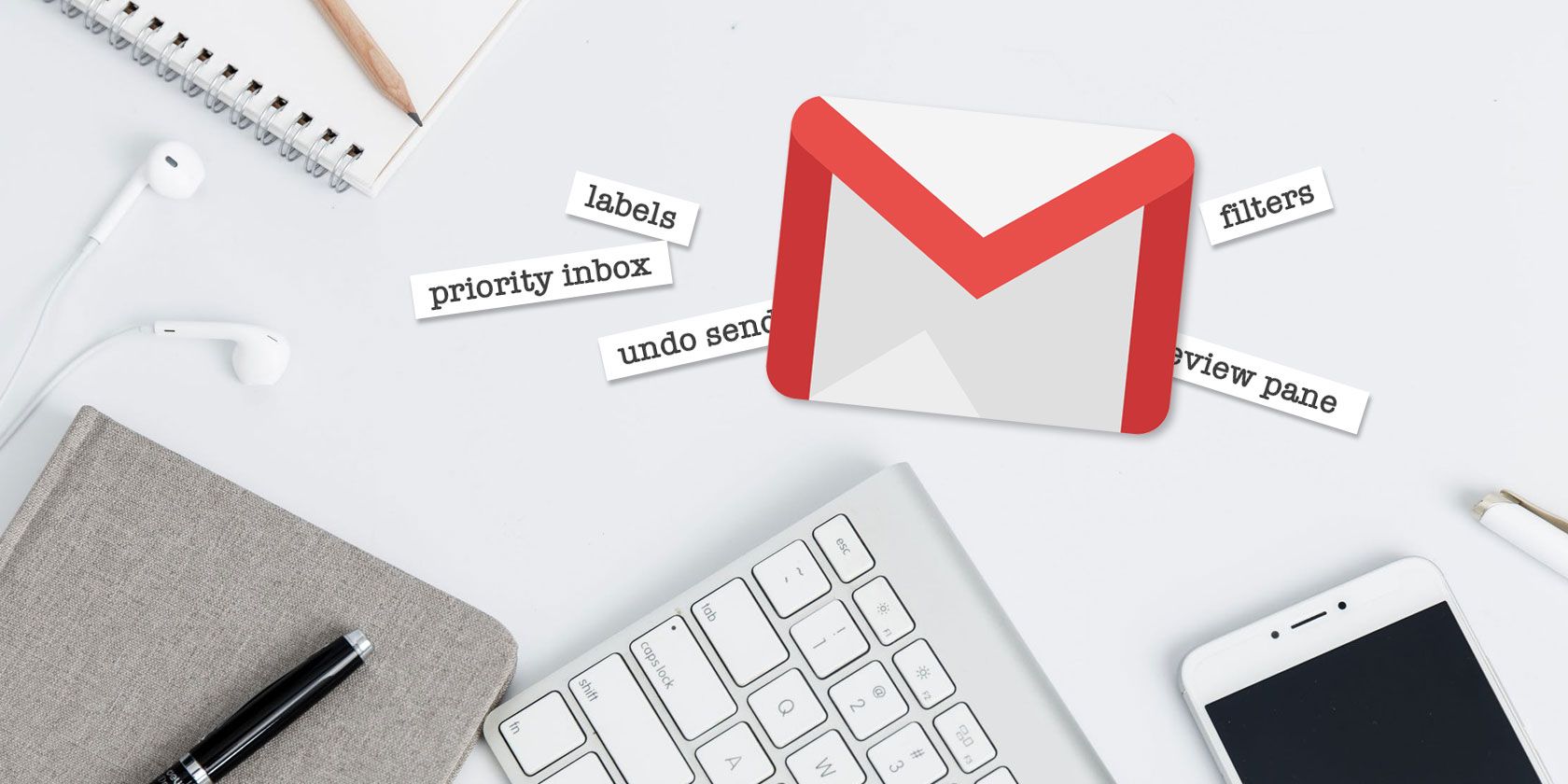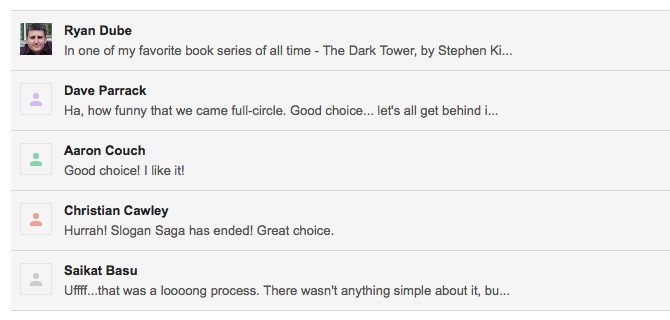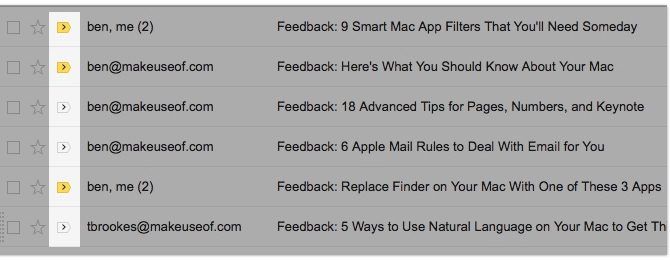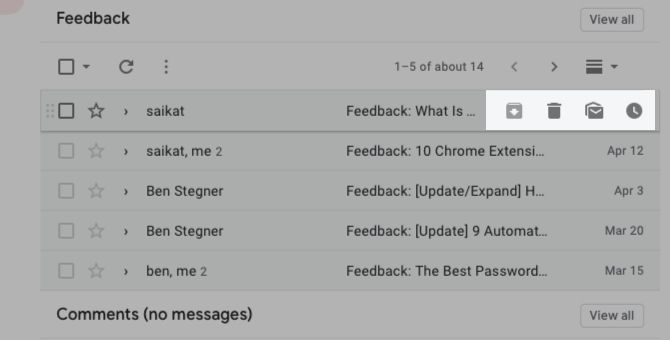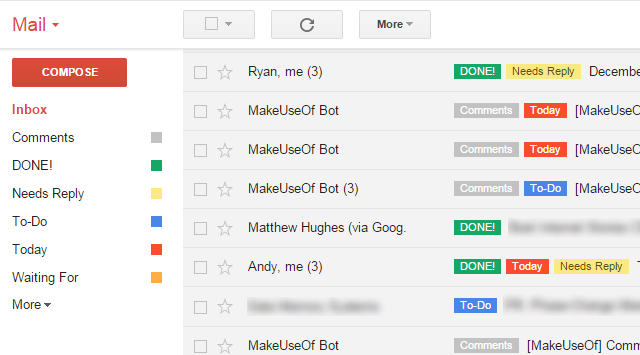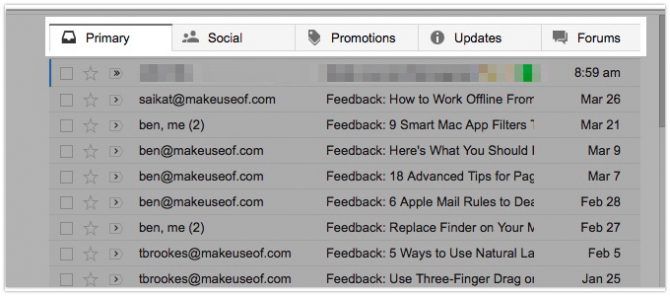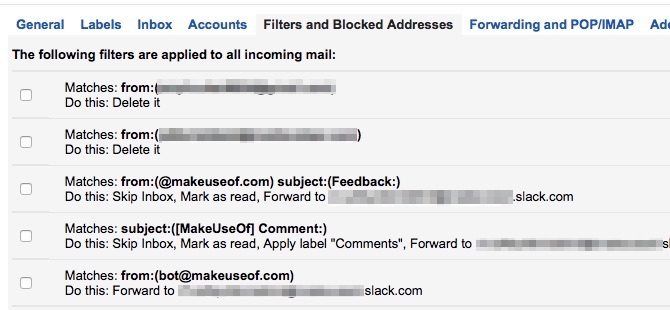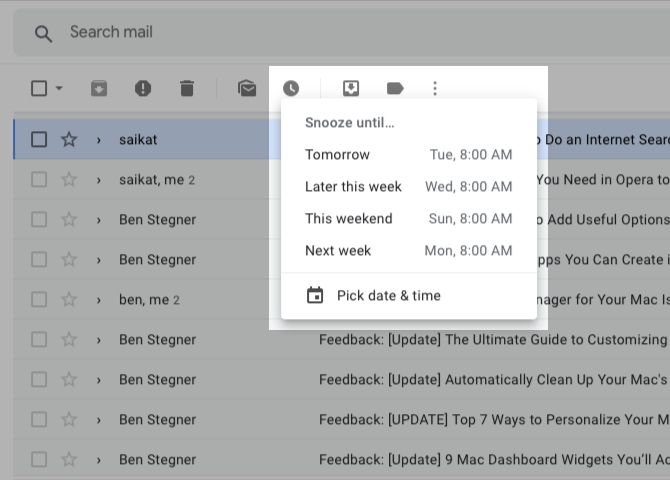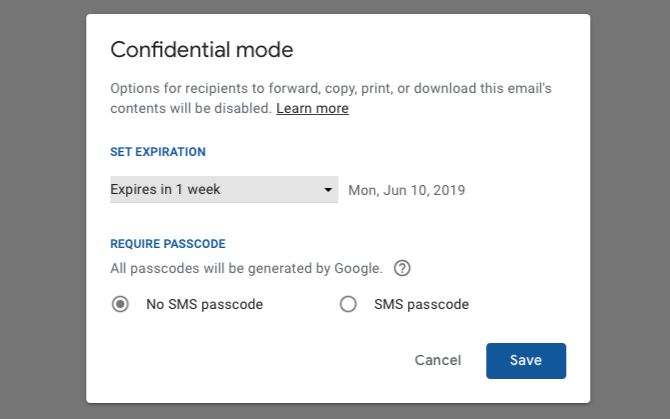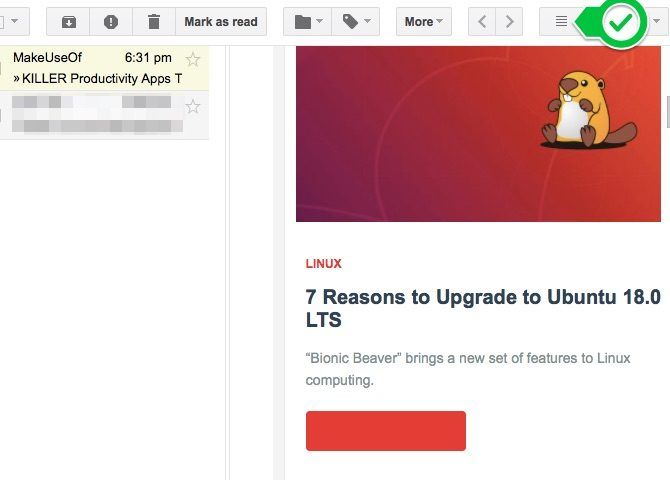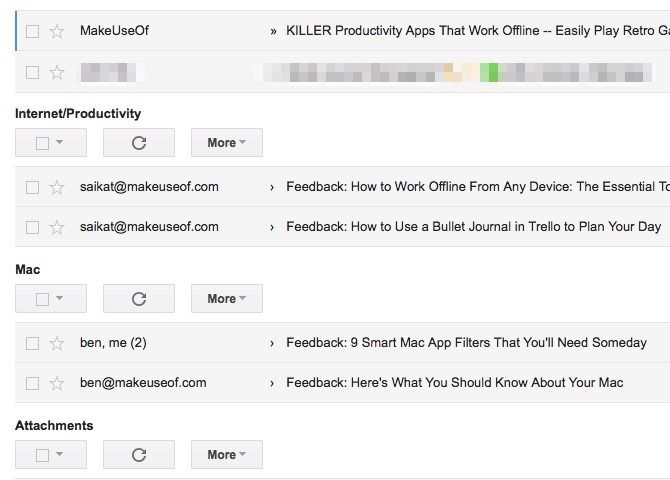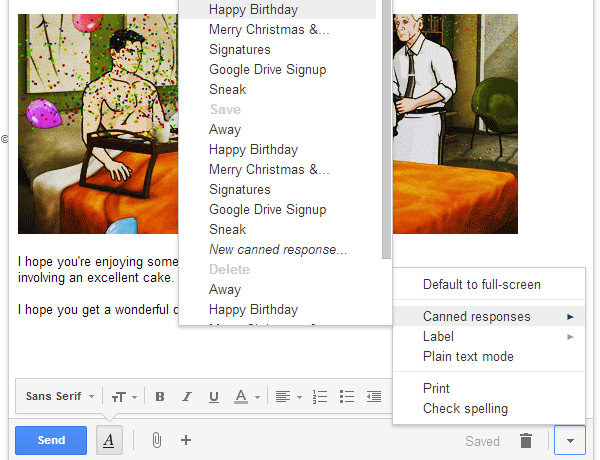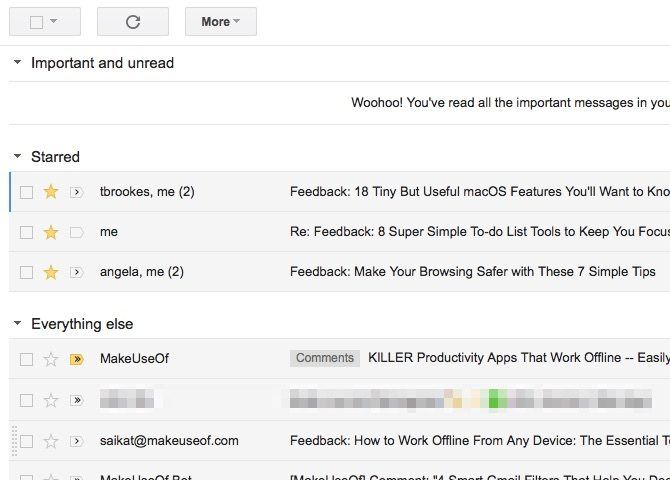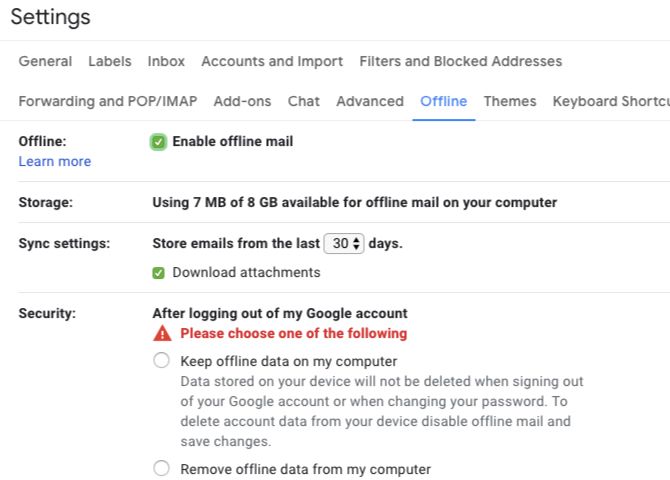Where are the folders in Gmail? Are labels the same as folders? How are both different from categories?
You might have questions like these about the web version of Gmail if you're new to it. To help you get familiar with Gmail terms, we'll list the key features of Gmail you should really know about.
1. Conversation View
You know this as an email thread. Conversation View packs an email and all replies to it into a single view to ensure that you get the context when you're reading any of the messages. Each message in the group gets its own collapsible section.
To turn on this Gmail feature, visit Settings > General. There, under the Conversation View section, select the radio button for Conversation view on.
2. Importance Markers
These are visual cues that highlight emails Google thinks might be important to you. You'll see them as yellow-colored tags next to certain emails once you enable the Show markers option under Settings > Inbox.
How does Gmail decide which emails you're likely to consider important?
It relies on the way you process email. Gmail pays attention to which emails you open and reply to, which ones you archive or delete, which contacts you communicate with, and so on.
When Gmail mistypes an email as important, you can correct it by clicking on the marker to disable it. Likewise, you can enable a marker for an email that you consider important but Gmail has failed to mark as such. In both cases, Gmail learns from your actions to improve its accuracy.
3. Hover Actions
Hover actions let you process an email without having to select it first. You can snooze, archive, or delete an email, or even mark it as read/unread in a snap thanks to these action buttons that show up when you hover over an email. Of course, for advanced actions like labeling and filtering, you still have to select the email first as usual.
If you find hover actions annoying, you can turn them off from Settings > General---under Hover actions, select the radio button next to Disable hover actions.
4. Undo Send
As its name suggests, Gmail's Undo Send feature lets you pull back an email you've hit Send on. You have a ten-second window to do it though, and you can tweak this interval by a few seconds under Settings > General > Undo Send.
Gmail enables the feature by default, and right after you send an email, you'll see the Undo option right below the search box.
5. Labels
Labels are the signature Gmail feature. They're text-based, color-coded identifiers to help you find the right emails faster. The items you see in the sidebar like Inbox, Trash, and Drafts happen to be labels that Gmail has already set up for you.
Labels behave somewhat like folders and somewhat like tags. You're better off thinking of them as tags though. Read our power user guide to Gmail to understand them better. (Note that Gmail doesn't have actual folders or tags.)
6. Categories
These are a set of default labels that show up as tabs in Gmail. You have four of them: Social, Promotions, Updates, and Forums.
Categories add context to your emails. They keep automated messages like social media updates and promotional mailers out of your primary inbox.
Thanks to the category tabs, you can find specific types of emails faster. For example, if you're looking for a password reset email, you can jump right to the Updates tab because that's where it's programmed to show up.
If you want to stick with the Primary tab only, turn off the category tabs via the Configure inbox option hidden behind the gear or Settings icon.
7. Filters
Filters are rules you set up to teach Gmail to process your emails for you based on various criteria.
You can use filters to stop automated emails, find emails with large attachments, and mark emails as read. You can also use them to label, delete, and organize emails automatically. Start by setting up smart Gmail filters to deal with the bulk of your email.
8. Snooze
Snooze is one of the new Gmail features and works as it does in other email clients---it lets you hide an email until you're ready to deal with it.
When you hit the Snooze toolbar button (the one that resembles a clock) on an email, you can tell Gmail when you want the email to reappear in your inbox. Pick from one of the preset schedules available or set a custom date and time.
9. Smart Replies
Smart replies are the predictive suggestions Gmail comes up with when you're replying to certain emails. Gmail bases these suggestions on your previous replies. You won't see them for every email, and the suggestions you see are usually simple answers to simple questions.
You'll see similar suggestions when you're typing an email, too. That's the Smart Compose feature in action.
While some people find these predictive responses helpful, some others find them annoying. If you fall in the latter camp, you can disable the Smart Compose feature as well as smart replies from Settings > General.
10. Nudges
Gmail nudges remind you to reply to important emails by pushing them to the top of your inbox. Need similar reminders to help you follow up on sent emails that haven't received a reply? Nudges have got you covered there too. Gmail enables this feature automatically. If you decide you don't want it after all, you can turn nudges off along with other AI-based features in Gmail.
11. Confidential Mode
Confidential mode lets you set an expiration date while sending an email containing sensitive information. You can further protect the email with a passcode and also revoke access to the email anytime, even before the expiration date is up. The email recipient won't be able to copy, download, forward, or print the email. Keep in mind that he can still take a screenshot of it.
To enable confidential mode for an email, click on the Turn confidential mode on / off toolbar button in the Compose window. (Look for the briefcase icon inset with a clock.)
The confidential mode is missing from G Suite as of now.
12. Preview Pane
This time-saving Gmail feature displays the content of an email right next to the message list. Essentially, you get a split-pane view that ensures you don't have to open a message to read it.
To toggle the Preview Pane feature, visit Settings > Advanced. When the feature is enabled, you can tell Gmail to display email previews either below or beside your inbox. Click on the icon next to the Settings icon for options to toggle between the two views.
13. Multiple Inboxes
Multiple Inboxes are a set of up to five inbox panes stacked below your primary inbox. The beauty of it is that you get to decide what kind of emails should go in each pane.
For example, you can have one pane for messages with a certain label and another one for starred messages. Throw in a third pane for emails that match a particular search query. It's all up to you.
To configure what you want to see in each custom inbox, you'll have to visit Settings > Multiple Inboxes. You'll see this section only after you enable the Multiple Inboxes feature under Settings > Advanced.
14. Canned Responses
Canned responses are nothing but email templates. Set them up to save yourself the hassle of having to type the same stuff over and over. For repetitive business emails, season's greetings and such, start with a canned response and tweak its details.
Like the two Gmail features above, you can enable or disable canned responses from Settings > Advanced.
15. Priority Inbox
This is a special Gmail view to ensure that the right messages bubble to the top in your inbox. By the right messages we mean the unread ones, the ones marked as Important, and your starred messages. Everything else comes second.
To switch to the Priority Inbox view, hover on Inbox in the sidebar and click on the tiny down arrow that shows up. You should now see a popup menu with a list of views or Inbox Types to choose from. You know what you have to select!
It's handy that you can customize the kind of messages you see in the priority inbox. To get started, go to Settings > Inbox > Inbox sections.
16. Gmail Offline
As you might have guessed, this is Gmail's way of giving you offline access to your email. It allows you to read, organize, search, delete, archive, compose, and queue emails for sending---all without an internet connection. It's a pity that you can take advantage of this Gmail feature only if you use Google Chrome.
To start accessing your Gmail inbox when you're offline, select the Enable offline mail checkbox under Settings > Offline. After tweaking the corresponding settings as you see fit, click on the Save Changes button beneath the settings.
Learn the Ins and Outs of Gmail
If you've got yourself a brand new Gmail account or if you've always favored a desktop client to use Gmail, the web version can take a bit of getting used to. The Gmail way of doing things can even feel illogical or complex to you.
But that's only until you get the hang of the best features your Gmail account, which you will sooner or later. Check out our ultimate guide to Gmail for more tips!

